Reflections on How Living Abroad Influences Home Decor Style
Before moving to Japan, I had never lived on my own. Growing up in my parents’ house, I got to see my mother express herself.
By: Annabell Stubbs
“How living in Japan has influenced your home decor style?”
The lovely host and creator of Flourish in the Foreign Christine asked me this question and I found it thought-provoking in so many ways. It offset a chain reaction of questions, answers, and further questions in my mind. It forced a sort of self-reflection I hadn’t considered on my own, so I’m grateful to her for the question.
As an architectural designer, I’ve never thought of myself as having a particular style. Especially regarding decor. To many architects, decor is a dirty word. About design styles in general though, sometimes I feel pressure from my peers in the field to define my style, my stance.
I’m still on a journey of discovery when it comes to this topic, so this blog is more of a self-exploration than a direct answer.
Living in Jamaica:
My Parents’ House & Architecture School
Before moving to Japan, I had never lived on my own. Growing up in my parents’ house, I got to see my mother express herself through the periodical changes she made to the interior decor.
Since I have no experience of living solo in Jamaica to compare my current one with, I can only reference my early ideas on design which surfaced in architecture school. I did my Bachelor of Arts in Architectural Studies at the University of Technology, Jamaica. In any architecture school around the world, you will learn about the history and elements of architectural styles.
I won’t bore you with an architectural history lesson, but do bear with me while I raise a few points that influenced my way of thinking as a designer.
In architecture school, we learned the tenets of modernism. Modernism as an architectural style resonated with me. A simple summary of the tenets would be;
Buildings should reflect the technology of their era, much like cars and cell phones do.
Ornamentation as seen in classical European architectural styles is at best, unnecessary. At worst, it is ostentatious, expensive, and hides rather than celebrates the brilliant engineering that actually makes buildings what they are. By this I mean, putting a swirly design over the connection between a column and a roof. Modernism celebrates those joints, exposing them for all to see. No frills.
These tenets affirmed my desire for Jamaica to diverge from the use of classical European architecture to signal class, power, so-called high culture, and beauty. I grew to despise any and all ornamentation. This transferred to my views on interior decor. (I am not so dogmatic now.)
In my opinion, at the time, almost everything in a typical interior was unnecessary. Honestly, I just found it easier to think out issues of functionality, rather than beauty. Designing for function gave me something to work with, what I can and cannot do. It was technically more complex but philosophically, pretty simple. Beauty was just too subjective for me. There is no right or wrong in interior design. The truth is it intimidated me, though I couldn’t admit it back then. I just boiled it down to interior decor being unimportant and focused on developing more technical skills in architectural design.
Living in 5 Different Apartments
Across 3 Prefectures in Japan
Even I get confused with the trajectory of my life since moving to Japan in the summer of 2013.
I’ll try to break it down in this timeline. Forgive the CV format.
2013-2015
Ishikawa Prefecture, hard winters
I taught English and got put up by my school in a pretty spacious 2LK (2 bedroom, living, kitchen, 1 bathroom) apartment. Everyone who visited me there commented that it looked like I just moved in. I didn’t get any new furniture and got rid of some of the stuff provided. Anyone who visited would’ve thought I was a minimalist.
I didn’t attempt to, nor had the desire to personalize the space. Teaching English was always gonna be a temporary gig. The sole objective was to save as much money as possible. Buying anything for the sake of interior decor was a waste of money, as far as I was concerned. If anything, my money went to the electricity bills. Japanese apartments are made of thin walls with no insulation or central heating. Being spacious as it was, it was even more difficult to keep it warm.
2015-2019
From Kanagawa Prefecture to Central Tokyo
From 2015 to 2019 I lived in three progressively smaller apartments. The first one I lived in while in school. It was a 6m2 (64 sqft) room with the tiniest shower room and kitchenette imaginable attached to it. The next two were sharehouses, with shared kitchens, and bathrooms. The horror stories I could tell...
Eifukucho Share House
2019-Present
Still in Tokyo
My current place isn’t perfect, it’s not as spacious and beautiful as my first one in Ishikawa, but it is mine and it feels like home. Maybe I needed the experience of the three horrible apartments in between this and the first. They made me appreciate every square meter of space I have now. They taught me that, a lot of Jamaicans may have it better than they think. They taught me through lived experience, the dos and don’ts of tiny living. Mostly, they taught me that tiny living is not for me, and I wouldn’t believe the hype if I were you. Just my humble opinion though.
This apartment is about 30m2 (322 sqft), pretty well laid out, and easy to use for the most part. I low-key hate the bathroom but, this is Japan.
Designing My Space
Function
Having been stuck in glorified broom closets from 2015 to 2019, I gained a serious appreciation for the separation of functions. I don’t want to eat, sleep, write my thesis, design buildings, and watch Netflix in the same space.
My first non-negotiable was that I was going to have a bedroom. I would do nothing but sleep in that room. Next, a dedicated workspace separate from where I relax. Furniture-wise, this meant getting a desk. I was happy to lounge on the floor in my downtime, but my boyfriend convinced me to get a very comfortable couch. Definitely did not regret that purchase. Otherwise, there’d be no coffee tables, side tables, or frills, just the essentials. The space is bigger, yes, but 30m2 (322 sqft) is still not that big. And furniture can make a space feel smaller than it is really quickly. Low-key, I’m starting to see how a coffee table would be nice, but we’ll see.
Colour and Materiality
My apartment has convincing faux wood flooring. It’s a lighter hue imitation wood, so I decided all my furniture would be made of light wood. Light colours help small spaces look bigger because they bounce light around. If any fabrics were involved, they would be light too. My bedsheets are white, my couch a light green. The flat white surface of the bed reflects the light from the balcony doors and projects it further into the deep narrow apartment. I didn’t trust myself with beige or white for the couch, because stains.
Furniture I Designed & Made
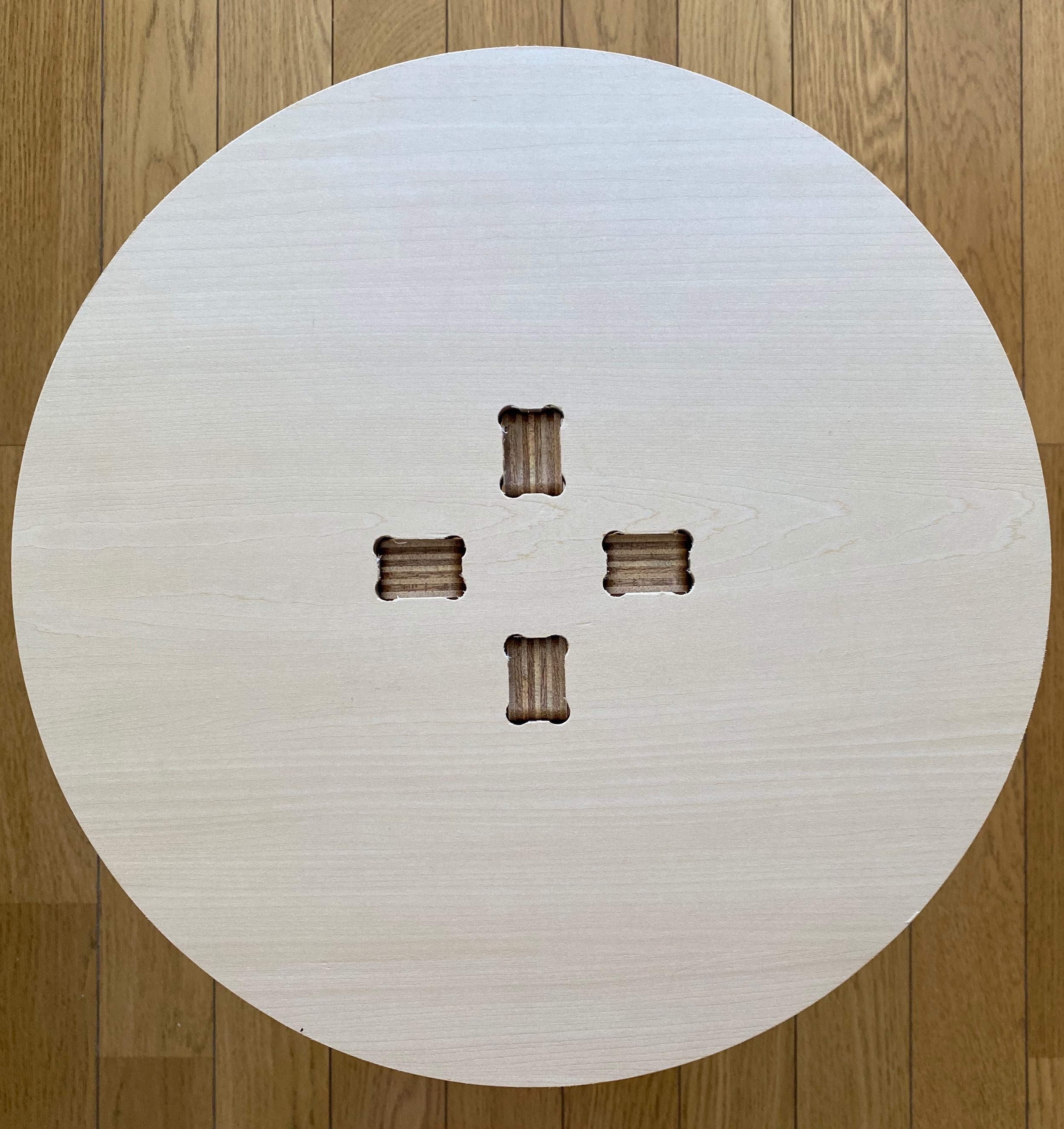
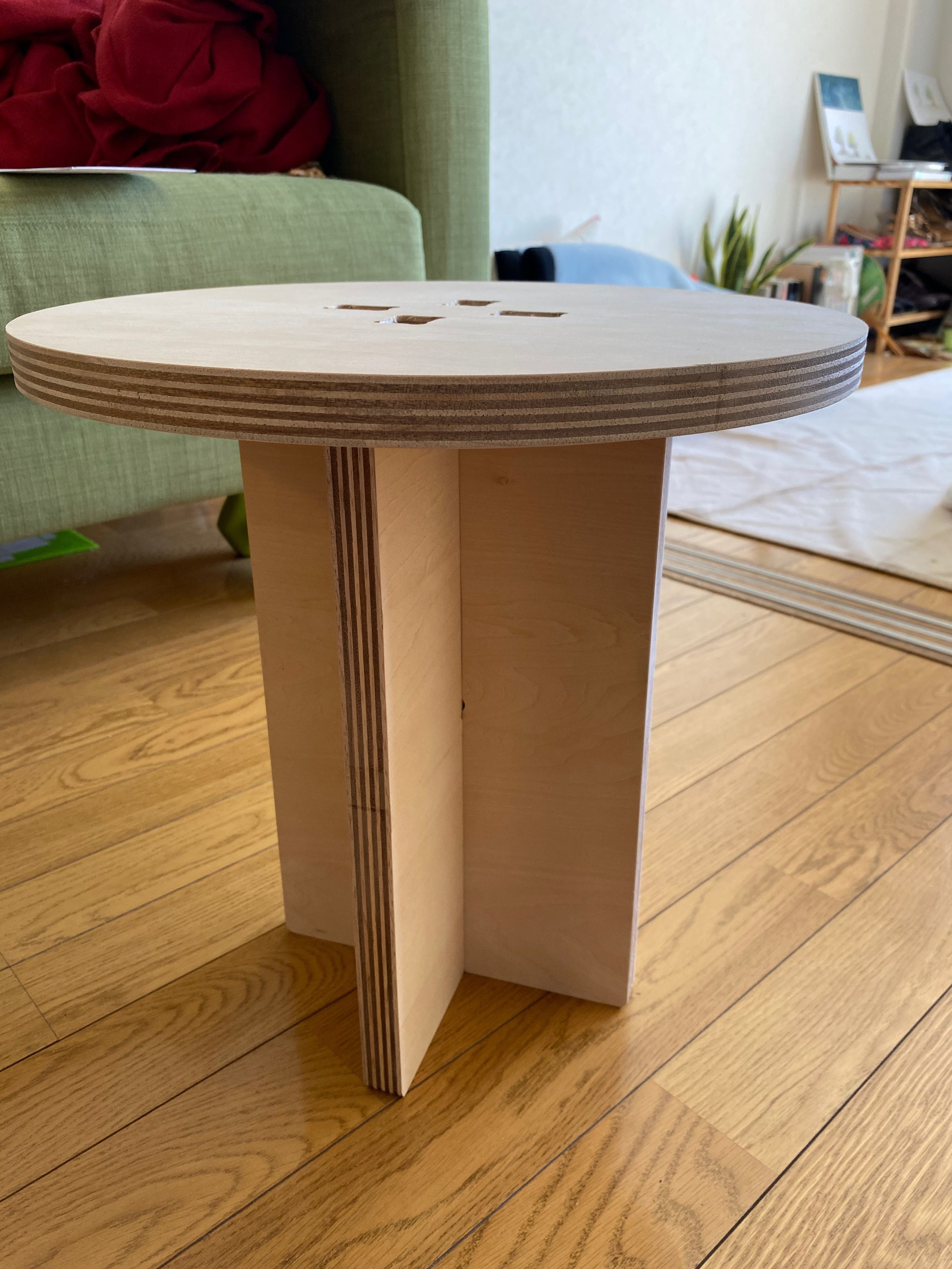
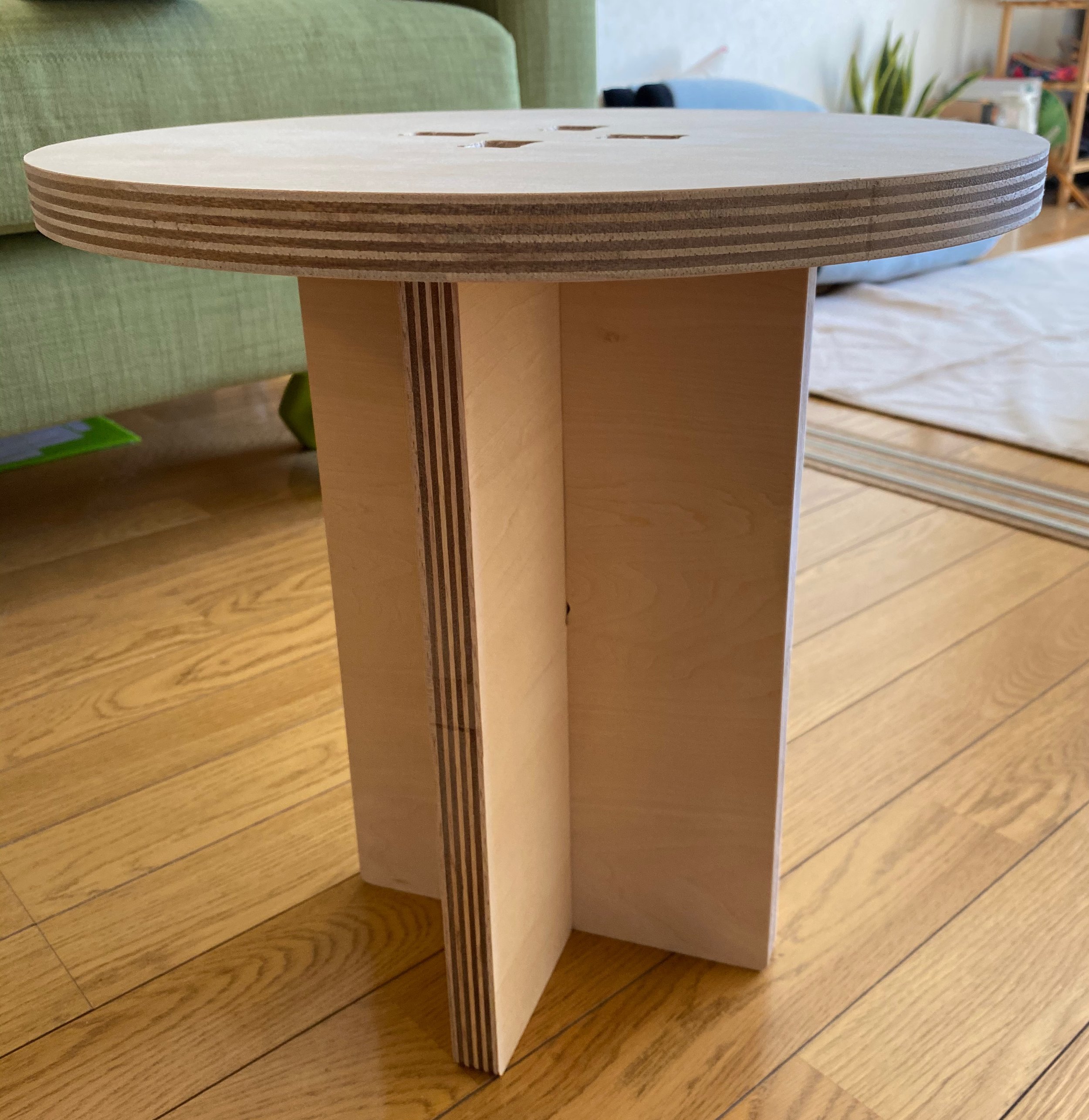
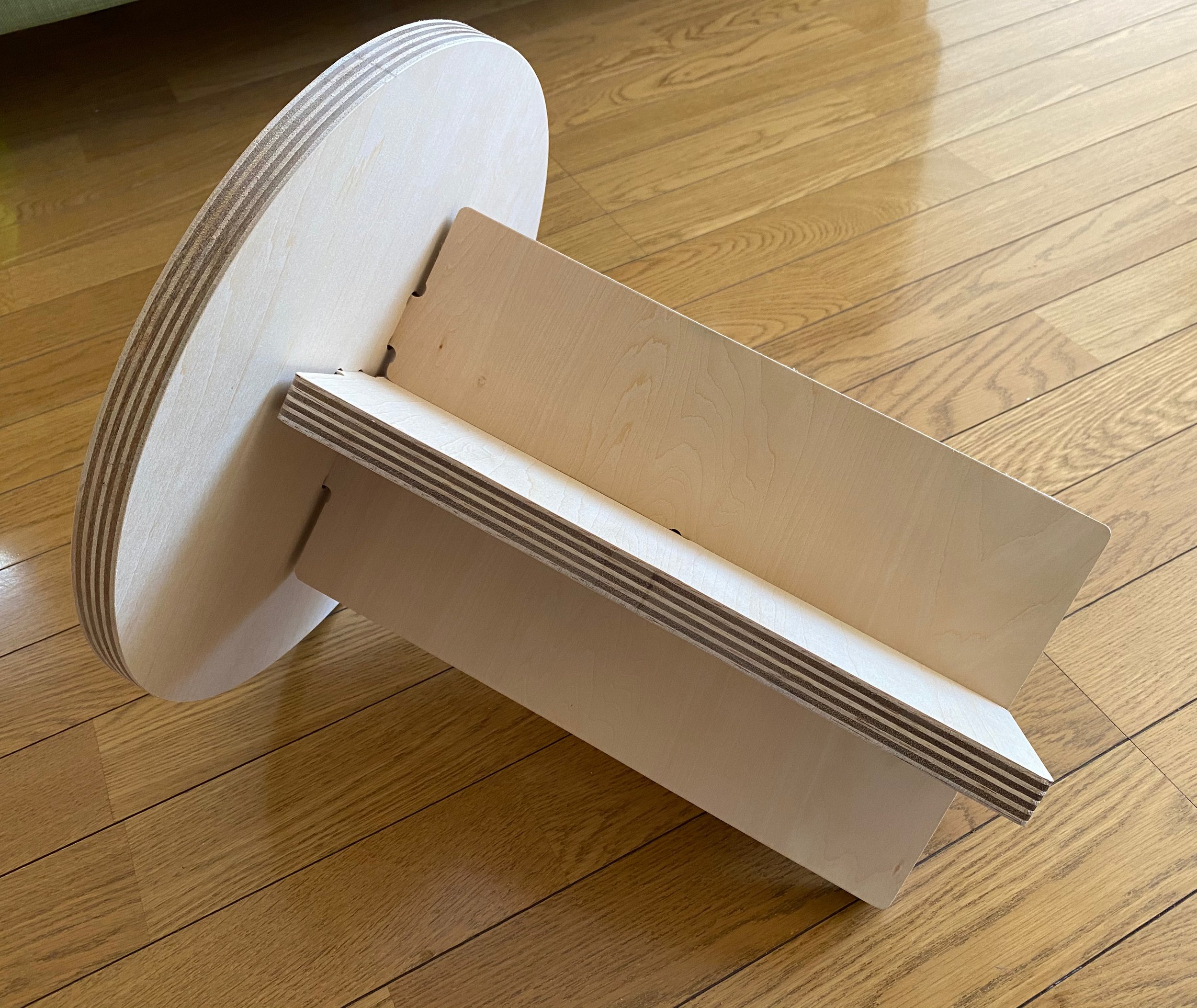
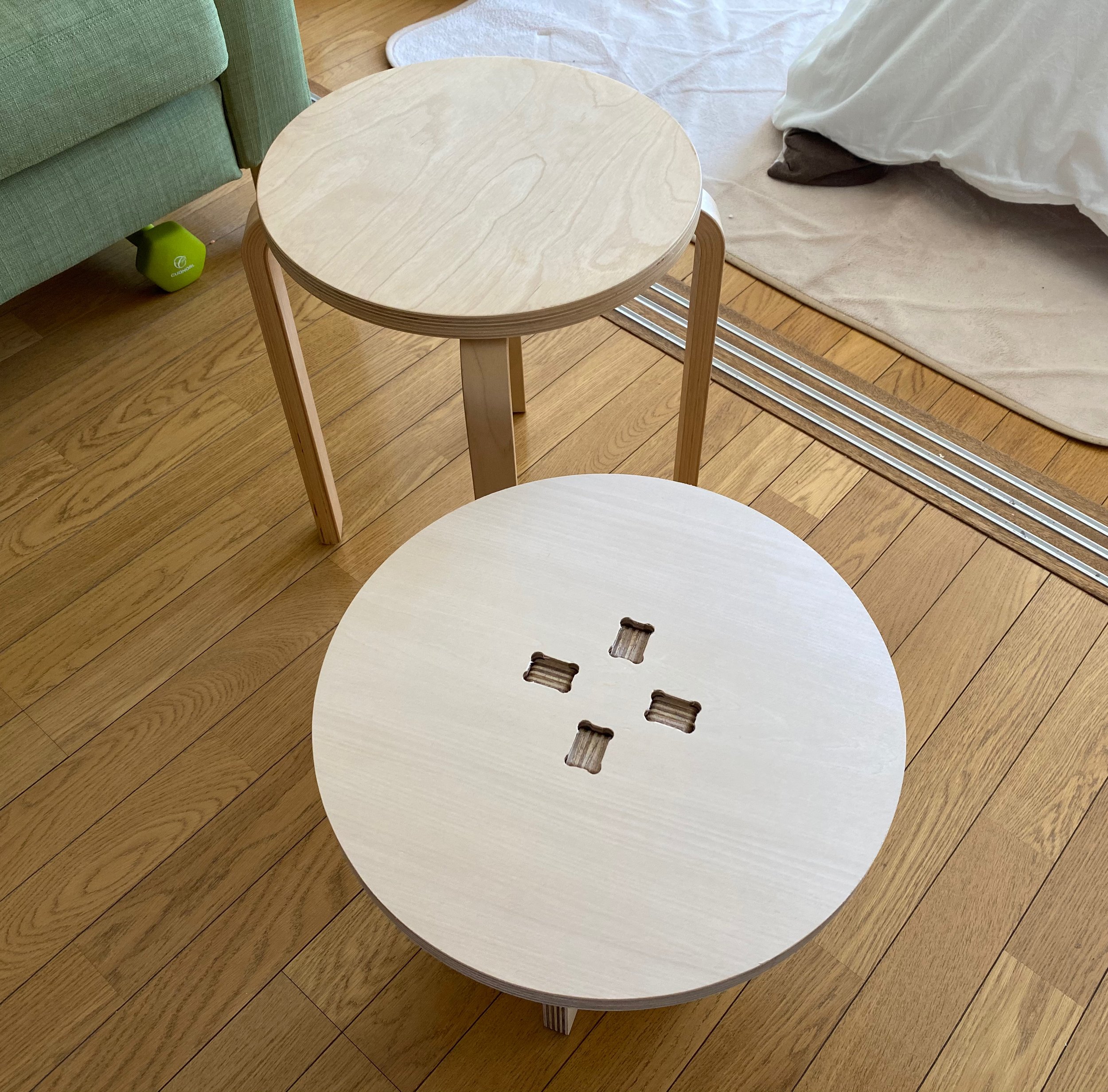
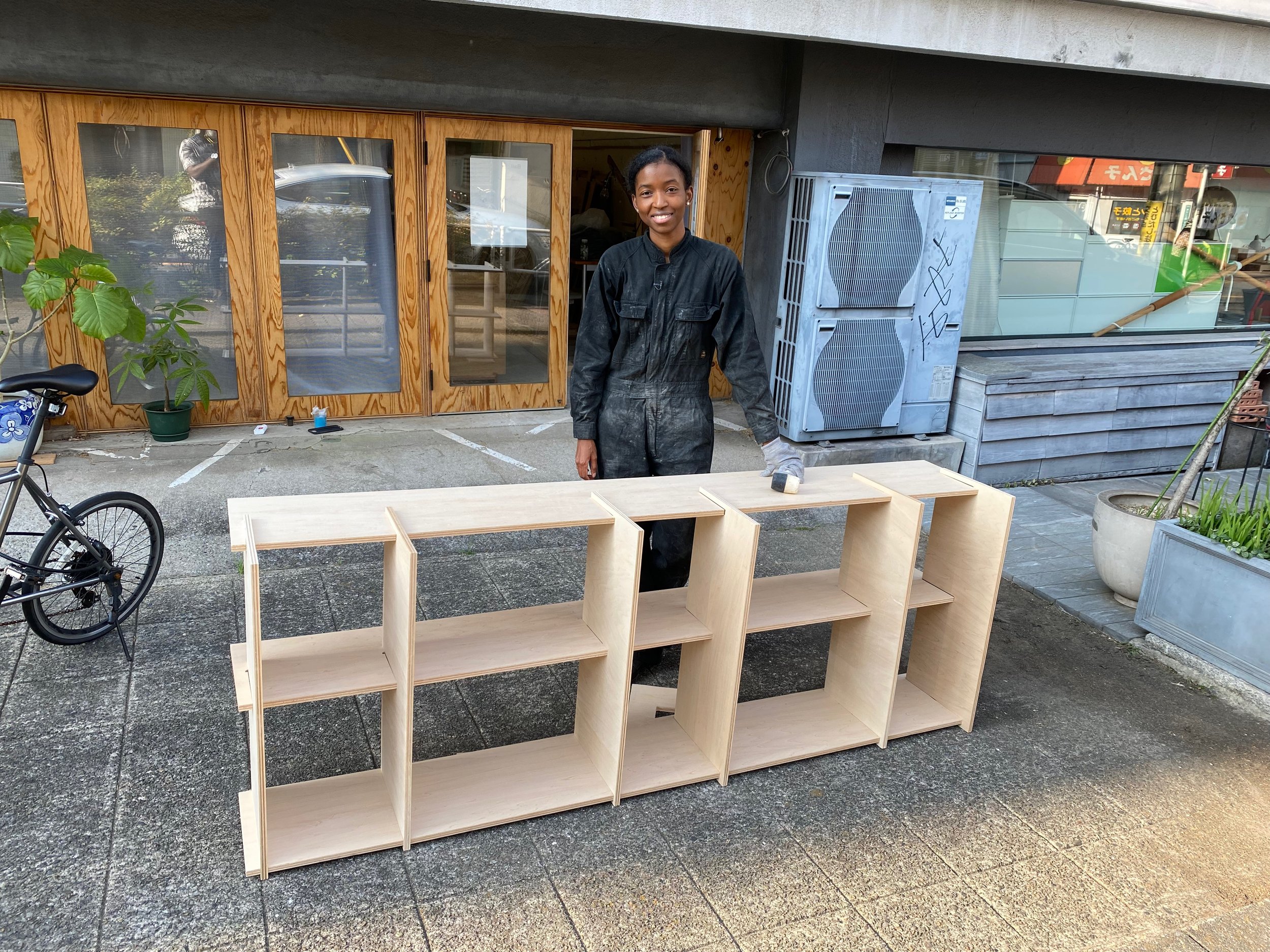
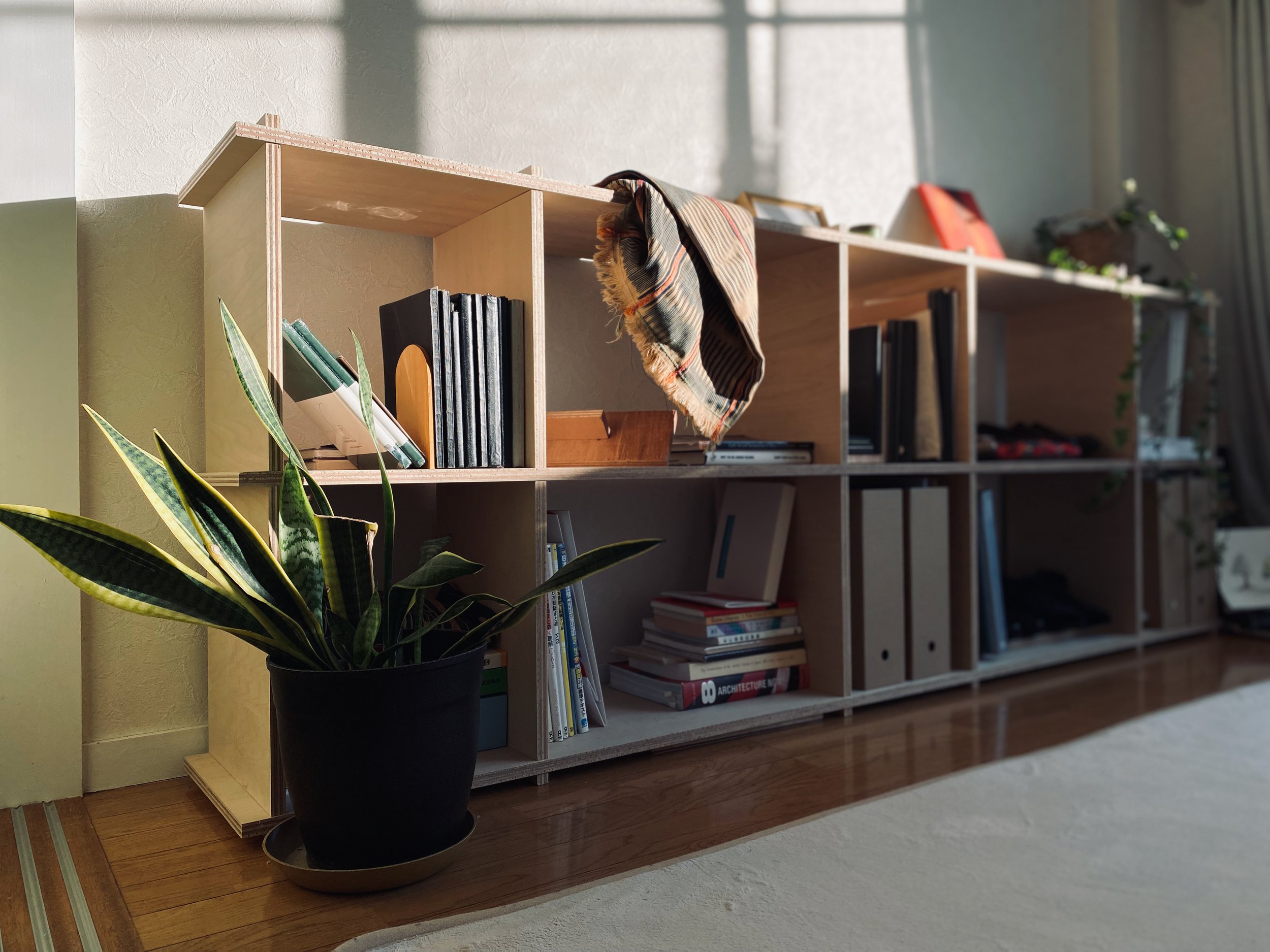
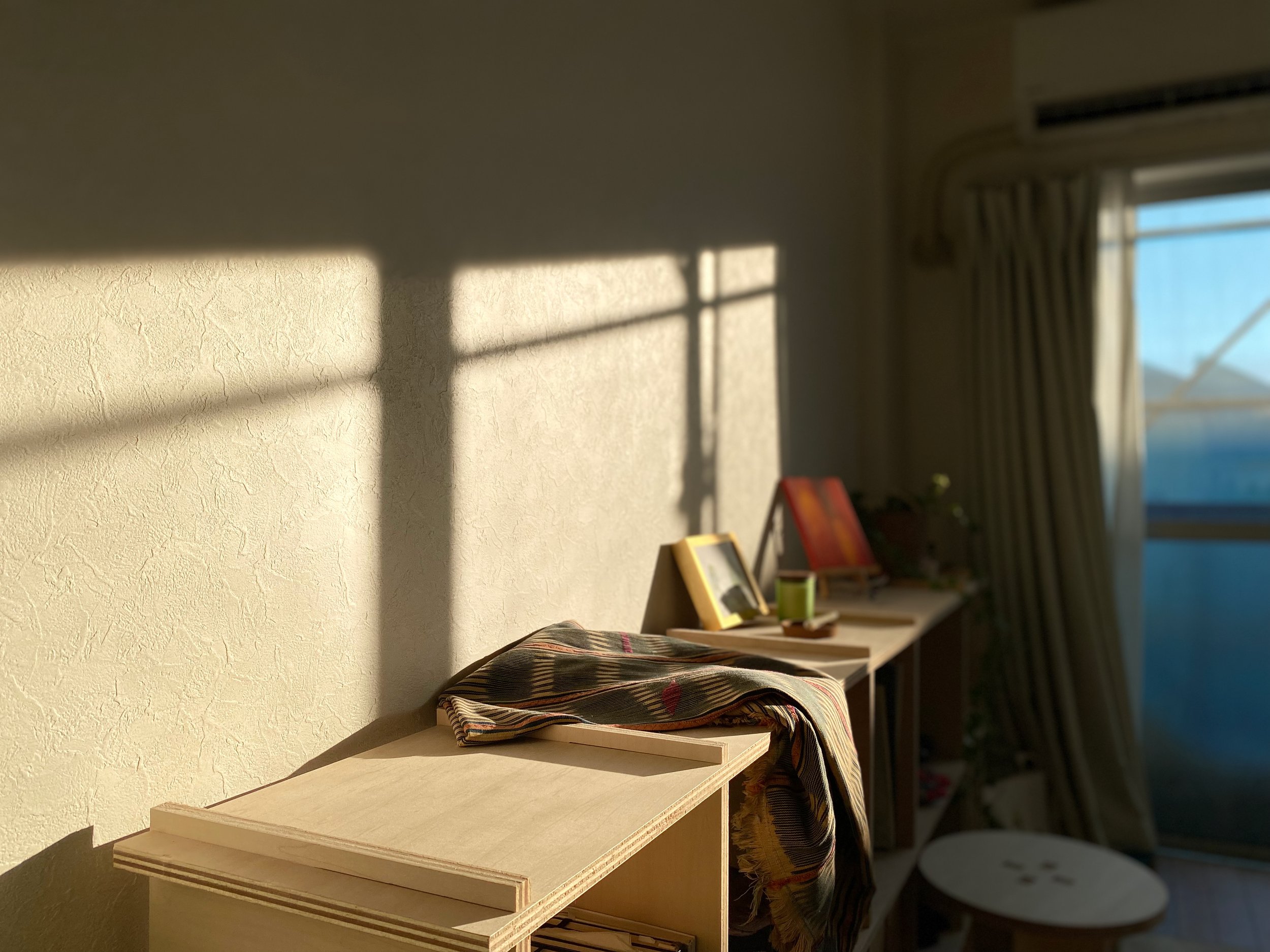
I think it would take another blog post to explain how I learned the skills I used to make the three stools and bookshelf I now have in my apartment. But I have my time at Keio University to thank for it. I also think I’d need to write a separate article to explain the process of designing each and how the space I live in dictated their outcomes. I can say, they follow the dos and don'ts of tiny living that I mentioned earlier.
Light-Coloured Wood
In this case, high-quality furniture-grade ply made from Linden wood.
A form and assembly driven by function, meant to display the technology used to make them.
Leaving the ridges on the surface, rather than making it a continuous level counter-top type, invites questions. Exposing them creates opportunities to explain how the shelf was made with slotted joinery, without nails, screws, or glue.
Dimensions
The length, height, and depth of the shelf and my stools were determined by the proportions of my own body, the size of the rooms they would be used in, and their relationship to furniture I already had in these rooms.
No backboard
For visibility of the wall behind it, making the presence of the shelf more subtle. Important in a small space. It’s more flexible without a front and a back. It has no defined direction.
Without a back, it can be used in the middle of a space, not just against a wall.
So,
Do I have a Style?
If I do have a style, it is guided by my process. A process of responding to real-world conditions.
In one case, I might measure the length of my thigh and calf to determine the diameter for the seat and height of a stool. In another case, I might measure the distance from my bed to an opposing wall, to tell me the maximum depth for my bookshelf. That is, a depth that would leave me space to walk in what I feel is a comfortable way.
Maybe it’s all not as logical as I think. I’m sure a lot of it is visceral. Tenets of modernism aside, I love wood. The fact that modernism demands that we expose materials instead of hiding them could be just a happy coincidence.
If I had a different space, in a different country, I’m sure the aesthetic would be very different from the one I’ve slowly developed here. While I am definitely not a minimalist, I’m also really uncomfortable with excess and clutter.
My style is more like a base formula. With different variables, there’ll be different results. With the combination of my tendency to respond to circumstance and to only want what’s necessary, I’d dare to hope that my style could be called appropriate.
I was born and raised in Jamaica, where my journey to becoming an architect began. I’m currently an architectural designer at Japan’s largest architectural firm.
Check out Annabell's episode on Flourish in the Foreign here.
Watch the IG Live featuring Annabell here.
Have some insight to share? Drop your comments below and let’s continue the conversation.
Found this helpful? Be sure to share with your friends!




